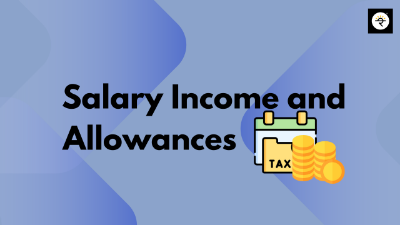Understanding Allowances Under the Head 'Salary' as per the Income Tax Act, 1961
When it comes to taxation, salary income is one of the most scrutinized heads under the Income Tax Act, 1961. Employees receive various types of allowances as part of their compensation package. These allowances can significantly impact an individual's tax liability. In this blog, we will delve into the different types of allowances under the head 'Salary' and how they are treated under the Income Tax Act, 1961.
What are Allowances?
Allowances are fixed periodic amounts, apart from salary, which are paid by employers to employees. These allowances can be fully taxable, partially taxable, or fully exempt from tax, depending on their nature and the provisions of the Income Tax Act.
As you must be aware that there are two tax regimes which co-exist, the new tax regime which is known for lower tax rates and the old tax regime which is known for allowance of deductions and exemptions.
Now, from FY 23-24, the new tax regime is the default tax regime and here only Std. deduction of INR 50,000 is available as deduction from Salary apart from certain Chapter VI A deductions. All allowances under this regime are fully taxable.
However, there are certain allowances which are partially or totally tax exempt under the old regime of income tax.
Types of Allowances
Partially Taxable Allowances
These allowances are partially exempt from income tax up to a specified limit. The remaining amount is added to the employee’s gross salary and taxed accordingly.
House Rent Allowance (HRA)
HRA is one of the most common allowances and a significant component of an employee's salary. The exemption on HRA is calculated as the least of the following:
- Actual HRA received
- 50% of salary (for employees living in metro cities) or 40% of salary (for employees living in non-metro cities)
- Rent paid in excess of 10% of salary
For example, if an employee receives an HRA of ₹20,000 per month, pays rent of ₹25,000 per month, and has a salary of ₹50,000 per month (basic + DA), the HRA exemption will be calculated as follows:
Actual HRA received: ₹2,40,000 per year
50% of salary: ₹3,00,000 per year
Rent paid minus 10% of salary: ₹2,40,000 per year (₹25,000 - ₹5,000) * 12
Thus, the exempt amount will be ₹2,40,000.
Often, we have heard that payment of rent to a spouse or other family member is eligible for HRA deduction. However, there are multiple judgements where it was observed that if a proper trail is maintained, for e.g. The house is in the name of the person who is receiving the rent, there is a proper rental agreement in place, there is monthly payment of rent via bank transactions and the landlord offers this rental income under the head house property under let out category, then these judgements allow exemption of HRA to the assessee for paying rent to his family member. However, before entering such a transaction, consultation from a practising CA is advised.
Special Allowance: Includes allowances for children’s education, hostel expenditure etc. These are exempt up to certain limits specified under the Act.
Special Allowances
Special allowances such as children’s education allowance, and hostel allowance are exempt up to certain limits:
Children’s Education Allowance: Exempt up to ₹100 per month per child for a maximum of two children.
Hostel Expenditure Allowance: Exempt up to ₹300 per month per child for a maximum of two children.
How can we take advantage of these allowances?
When you join a new organisation as an employee, most of the employers give an option for designing your salary structure within the allowed CTC. you can choose the adequate amount of allowances including HRA and plan your taxes accordingly.
Also, if your employer is comfortable, you can enter into a contract with him where you can draw professional fees instead of salary and take benefit of presumptive taxation where you can offer only 50% of the professional fees received to tax.
Conclusion
Understanding the various allowances under the head 'Salary' is crucial for both employers and employees. Proper planning and awareness can help in optimizing tax liabilities. Employees should maintain detailed records and consult with tax professionals to ensure they are taking full advantage of available exemptions and deductions.
Navigating the complexities of allowances and their tax implications can be challenging, but being informed can lead to better financial planning and compliance with the Income Tax Act, 1961.


